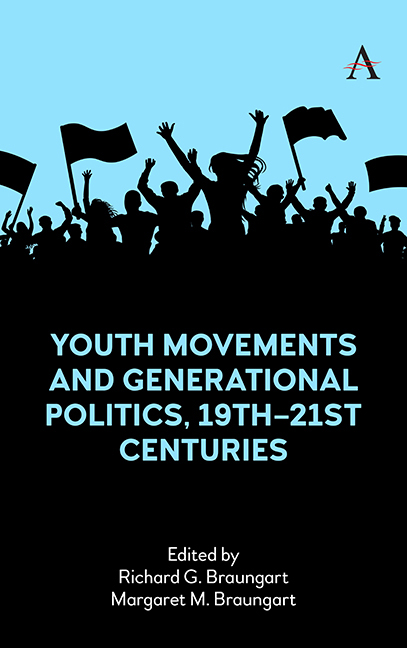11 - Historical Generations and Citizenship: 200 Years of Youth Movements
Published online by Cambridge University Press: 18 November 2023
Summary
This study explores the relationship between youth movements and citizenship that developed and changed over the past 200 years. The principal historical and contemporary perspectives on citizenship are summarized, noting that youth movements—which first began in 1815—have occurred in waves during certain periods in modern history. These waves or clusters of youth movement activity are called historical generations, representing combinations of generational and historical forces. The characteristics of historical generations are outlined, and five extraordinary periods of youth movement activity are identified and described: Young Europe, Post-Victorian, Great Depression, 1960s Generation, and 1980s Generation. Focus is given to the types of citizenship around which young people mobilized within each of the five historical generations. Finding that the struggle for citizenship has been a central feature of youth movements, some of the common patterns and newly emerging themes in the evolving relationship between the individual and the nation-state are discussed. The study concludes with a brief summary of the findings.
INTRODUCTION
One of the characteristics of the 1980s was the eruption of political protest and widespread youth movement activity throughout every region of the world. Youth movements are the organized efforts of young people to mobilize for political change, and in the 1980s young people formed political movements in Western Europe, Eastern Europe, Central and Latin America, North America, Africa and the Middle East, and Asia (Braungart and Braungart 1990c). In Western Europe, young people rallied around slogans such as “Stop de N-bom,” “Chase the Yankees out and shatter NATO,” and they demanded “free space” or autonomous youth centers. In Eastern Europe, the rallying cries were “Democracy now or never,” “Freedom and peace,” and “Away with the army,” while Chinese youth chanted “Down with dictatorship” and “Give me liberty or give me death!” Whether peaceful and earnest or bloody and murderous, the 1980s youth movements signalled young people's anger, dissatisfaction, and rejection of the status quo along with their personal determination to make a difference in society by bringing about needed reform.
To much of the world's adult population, the 1980s youth unrest was reminiscent of another era of youthful protest that took place in the 1960s.
- Type
- Chapter
- Information
- Youth Movements and Generational Politics, 19th-21st Centuries , pp. 261 - 292Publisher: Anthem PressPrint publication year: 2023

